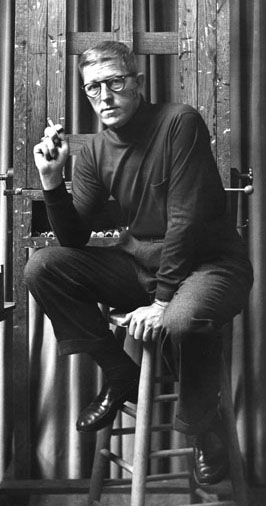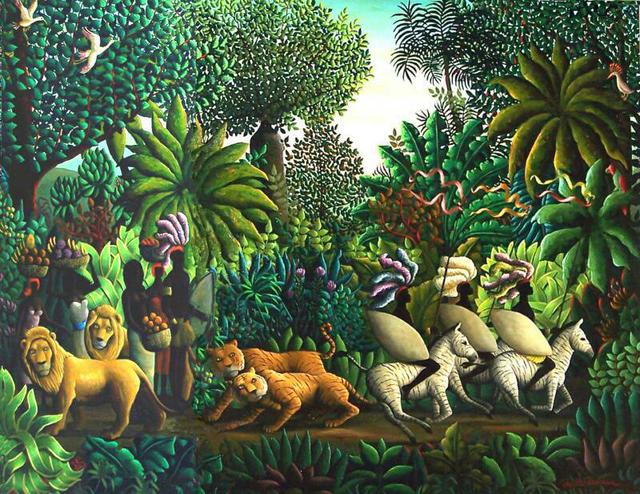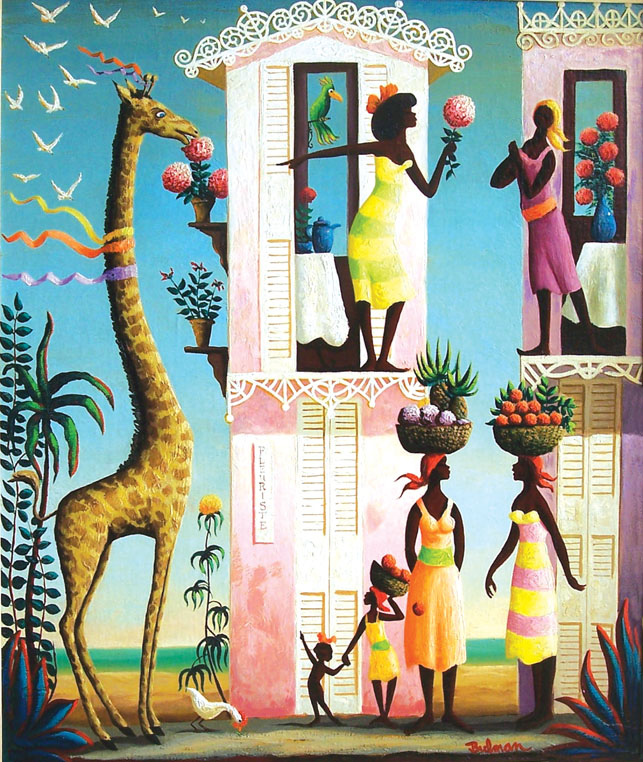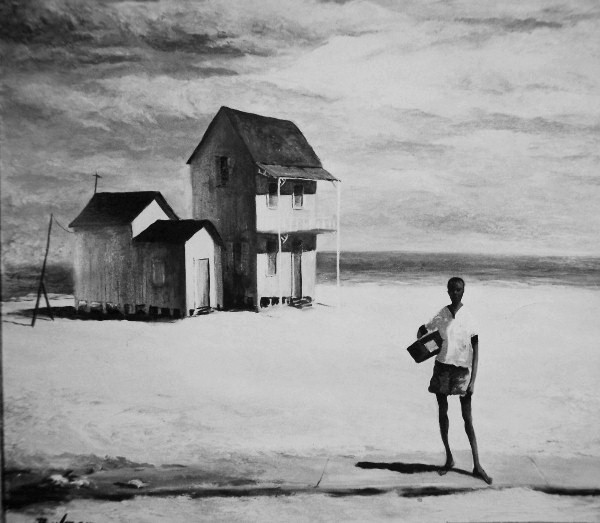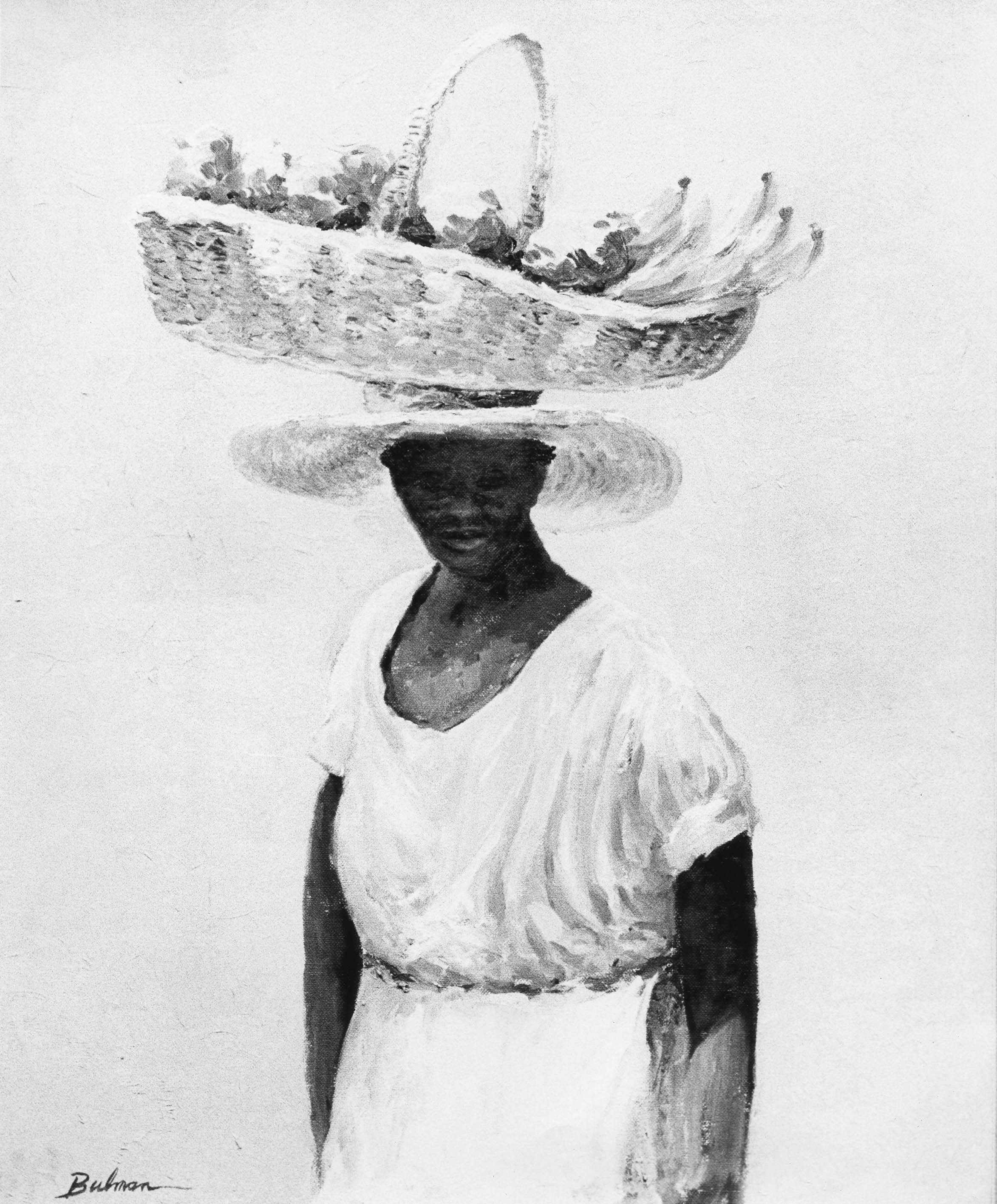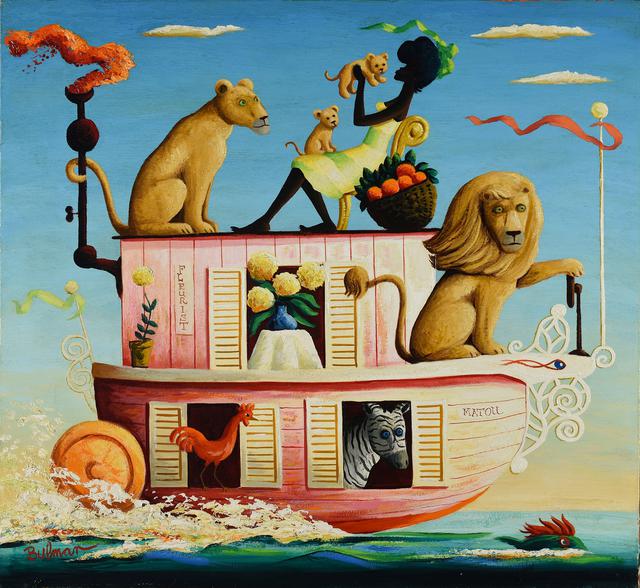Official Biography of Orville Bulman
(American, 1904-1978)
“Being an artist not only opens doors, but minds as well.” - Orville Bulman, 1952
Orville Bulman, a self-taught artist, was born in 1904 in Grand Rapids, Michigan. A year later his father, Elvah O. Bulman, invented what was to become a long line of ingenious products, a twine holder and dispenser. Subsequently, Elvah (or E. O. as he was called) continued to create dispensers and cutters for virtually all goods that could be rolled up. Before long, the Bulman Paper Cutter became de rigueur for any self-respecting grocery or dry goods establishment in the early 1900s, and Bulman was expected to carry on the hugely successful family business, which dutifully, he did.
While helping his father run the company, Bulman's true artistic calling was too loud for him to ignore. After devoting himself to the corporation in the twenties and thirties, he exhibited at New York's Society of Independent Artists in 1937 and for a short time around 1948 exhibited with the Woodstock Art Colony. In the late 1940s he was painting New York City social realist oils as well as dark, haunting pictures of old barns and churches.
Bulman's life in Palm Beach, Florida, began around 1946 when he, after sustaining recurring injuries to his neck, began to spend the winters here. Although he was in traction intermittently for eight years, he was still able to paint, and he took advantage of being away from the company to devote himself to his art. He adopted Palm Beach as his second home, exhibited frequent one-man shows at the renowned Worth Avenue Gallery, and traveled extensively throughout Florida, Louisiana and Alabama to paint African-American inspired genre scenes. These poignant paintings of the segregated south (especially the Florida scenes) brought national attention to his art.
During the early 1950s, Bulman painted regionalist scenes of American country and southern life, and lively jazz dance scenes, inspired by New Orleans nightclubs he and his wife often attended. Bulman happened to see pictures of Haiti during that time and admired the island’s style, verve and gracefully trimmed houses with lacy appliqué carved wood. Painting seven imaginative works inspired by photographs, he subsequently visited Haiti for the first time in March of 1952, and traveled to other Caribbean islands as well. Bulman loved Haiti and its people, and felt that they were the best inspiration for further work. He lived with the islanders (who loved and encouraged his art) in the rustic hills for a time and felt like he was a part of their village, deeply experiencing their religion, humor and lifestyle and respecting their way of life far better than other Americans.
Newsweek featured two Bulman paintings in 1952, one depicting a colorful Haitian open-air bus bursting at the seams with people and the other a Florida-inspired scene of a young African-American man on the beach. “His works are charming,” the critic wrote. That year he was invited to show at the prestigious Madison Art Association, and in 1953 he was featured in Life Magazine.
By 1954, Bulman was the president of the Bulman Manufacturing Company of Grand Rapids, but he still continued to paint. During this period he exhibited a one-man show at the Delaware Art Center (now the Delaware Art Museum) entitled “A Businessman Paints." His canvases portrayed - once again - stark neglected town scenes and regionalist oils, but with the addition of a few realistic island genre scenes. These included a painting of a Haitian funeral, and one of a lone man standing before an island house. In 1955 a one-man show of his works was exhibited in New York at the prestigious Grand Central Art Galleries, debuting one of his "barque" paintings, another recurrent motif he was to use for the bulk of his oeuvre along with other charming, fanciful island scenes. The show received rave reviews.
It is interesting to note that most people who don't know about Bulman's ethnicity assume he was African-American or Haitian because he painted images of people who were a different color than he, not as an outsider would, but with empathy and grace. He was an artist whose expression and genius transcended color barriers, and the humor in his art was, and remains today, universally appealing. The people of his 'island' were those to be admired, as they were able to get along with each other much more successfully than the people in our real world.
He continued to maintain a winter home in Palm Beach and a summer home in Grand Rapids until he died, and it was in those home studios where he was to create more and more colorful and fantastical paintings. In the 1950s, 1960s and '70s, his popularity burgeoned throughout Palm Beach, New York, California, the Midwest and Europe. He became the darling of society and Hollywood, consistently selling out one-man shows in venues throughout the United States and Europe. Hollywood stars such as Henry Fonda, Greer Garson, Joan Fontaine, and George Hamilton collected his art. The Duchess of Windsor and Marjorie Merriweather Post became collectors of his works. Robert F. Kennedy and President Gerald Ford also owned Bulman paintings, as did countless corporation presidents. Amid this heady success, Bulman remained modest and fought to keep his prices low so that people from all walks of life could afford them.
The inspiration of his critically acclaimed "jungle paintings" of the 1960s and '70s was the work of Henri Rousseau, old master paintings, along with the lush foliage and tropical scenery of his Manalapan, Florida, home. The islanders in Bulman's world became princesses, duchesses, kings and queens.
From the beginning of Bulman's art career, he and his wife Jean established a foundation that was devoted to helping other artists and art museums. All the proceeds from every Bulman painting that was sold went to artists or the museum in which his paintings were exhibited. The Grand Rapids Art Museum was able to purchase a painting by Picasso because of the couple's generosity. Bulman would also purchase other artists' works, and then donate them to a museum.
By 1977, Bulman had exhibited in 41 one-man shows and sold over 2,000 paintings. He died on January 4, 1978.
In his own words, Bulman’s art was created because, “When I first started to paint years ago, there was so much sadness, strife and outright mayhem in work back then, that I decided to bring, if I could, some laughter into painting.” One thinks that we in the present day are sorely in need of Bulman’s fabulous world once again. In today's sometimes stressful and brutal world, his paintings raise our spirits, and the true ambition of the artist remains wholly realized: "To bring more color and happiness to more patrons than any artist before me."
 | ||||
Copyright: Deborah C. Pollack
